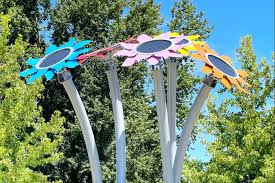
Eco-sculpture is an emerging art form that blends creativity with environmental consciousness. Made from biodegradable or recycled materials, these sculptures are designed not just to beautify but to interact with nature—sometimes even to disappear into it.
Artists creating eco-sculptures often work with materials like bamboo, jute, clay, or repurposed trash. These works may slowly erode, melt, or decompose, drawing attention to the cycles of life and decay. This temporality challenges traditional ideas of permanence in art and aligns with ecological principles.
Placed in forests, beaches, or urban green spaces, eco-sculptures encourage viewers to reflect on environmental fragility and sustainability. Unlike traditional monuments, they embrace change—transforming with the seasons, affected by sun, wind, and rain.
Some eco-artists even seed their sculptures with plant life, allowing flora to grow through or on them. This merging of sculpture and ecosystem blurs the lines between human-made and natural. It’s not uncommon for birds or insects to inhabit these pieces, turning art into habitat.
Beyond aesthetics, eco-sculpture also serves as a subtle protest against consumerism and waste. By using what’s already discarded or naturally available, artists demonstrate that beauty need not come at the planet’s expense.
Eco-sculpture is not just an art movement—it’s an ethic. It asks: Can art heal rather than harm? Can we create without leaving a scar? These works don’t demand attention through grandeur. Instead, they whisper softly in nature’s voice, inviting us to slow down, observe, and reconnect.
